Veneers in Tokyo
Search and Compare the Best Clinics and Doctors at the Lowest Prices for Veneers in Tokyo

Find the best clinics for Veneers in Tokyo
With Medijump you can browse 1 facilities offering Veneers procedures in Tokyo. The cheapest price available is $222 in Higashicho. And for the cheapest price globally, prices start from $1 in Vietnam.
Veneers in Japan
Price: $ 222
Veneers in Higashicho
Price: $ 222
Vietnam offers the best prices Worldwide
Price: $ 1
The University Hospital of Tokyo, located in Chome Yushima, Tokyo, Japan offers patients Veneers procedures among its total of 286 available procedures, across 30 different specialties. Currently, there's no pricing information for Veneers procedures at The University Hospital of Tokyo, as all prices are available on request only, whilst the national average price is approximately ฿7,979. There is currently a lack of information available on the specialists practicing at the Hospital, and they are not accredited by any recognized accreditations institutes
Compare Before & After Photos of _procedure_photos.phpVeneers
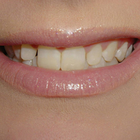

Front view
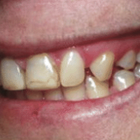
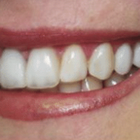
Half-side view
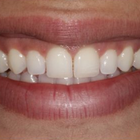
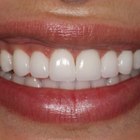
Front view
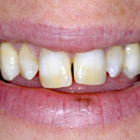
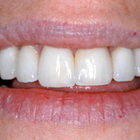
Front view
WHY US?
At Medijump, we're making medical easy. You can search, compare, discuss, and book your medical all in one place. We open the door to the best medical providers worldwide, saving you time and energy along the way, and it's all for FREE, no hidden fees, and no price markups guaranteed. So what are you waiting for?

Free

Best Price

Widest Selection

Risk-Free
What you need to know about Veneers in Tokyo

Dental veneers are thin covers that are attached to the surface of teeth to enhance their appearance. The non-invasive dentral procedure is previously popular among those with damaged or discolored teeth. Nowadays, however, the procedure is seen as the ideal method of achieving the ‘perfect smile.'
Veneers can be used to hide uneven, misaligned or simply imperfect teeth. The veneers are cemented over the existing teeth and fixed into place – there are two main types of veneer; Porcelain and Composite. Porcelain veneers are more expensive and appear more natural, being made in a laboratory so require multiple visits. There is often the need to alter the existing teeth, removing some of the mass. Composite veneers are made of the same materials used for cavity fillings. They can usually be made quickly, and are sculpted directly on the teeth instead of in a laboratory. Thus allowing the procedure to be done in a day.
What does a Veneers Procedure Involve?
Veneers are used primarily for aesthetics. This type of treatment procedure is perfect for people who have gaps in their teeth, stains, as well as people who may have chipped a tooth. Veneers are custom-made shells designed to fit the shape of your teeth and to be attached to your front teeth to improve the size, shape, color, and length.
Two main types of veneers are:
- Composite Veneer - this type can be created by your dentist on the same day and directly applied to your teeth. You will only need a single appointment to complete the procedure.
- Porcelain Veneer - this type is manufactured in a laboratory. Opting for a porcelain veneer will require you to have two appointments. First, is to prepare your teeth (enamel removal) and mold a model of your teeth to be created in the lab. The second is to finally cement your veneers onto your teeth.
The most commonly used type of Veneer is the Porcelain Veneer as it appears more natural and can resist stains better than composite veneers. Besides the two main types of veneers, some dentists may also offer no-prep veneers. These may include specific brands of procelain veneers like Vivaneers and Lumineers. They are less invasive to apply since the layers of tooth under the enamel aren't removed.
In terms of anesthetics, local anesthesia is not usually required while undergoing the whole procedure. However, depending on how you handle pain and discomfort, you may request to receive local anesthesia or sedation.
Aside from giving you a pleasing smile, veneers are resistant to staining and offer the best fix to broken or damaged teeth.
How Long Should I Stay in Tokyo for a Veneers Procedure?
This type of procedure is an outpatient treatment, meaning you may be able to go home after undergoing the procedure. However, you will be required to do a follow-up check-up with your dentist to assess the placement of your veneers and in most cases, the procedure has to be carried out over 2 separate occasions, just a day or two apart. Since this is a non-invasive treatment, stitches are not required, but you will be required to stay in Tokyo for at least a few days.
What's the Recovery Time for Veneers Procedures in Tokyo?
There is actually no recovery time after the placement of your veneers. You can also return back to your daily routines including exercise immediately after your trip. As for the enamel removal, you may experience some mild discomfort for about a week. It is best that you avoid very hot or cold foods, including hard, chewy or crunchy food. When your sensitivity wears off, you can return to your normal dietary habits.
What sort of Aftercare is Required for Veneers Procedures in Tokyo?
Once your dental veneers have been placed and you have completed the whole procedure, you should commit yourself to good oral hygiene, regular visits to your dentist and a good healthy lifestyle. Dental Veneers can last beyond 10 years now, however, just like your natural teeth, veneers are also still susceptible to damage. This is why aftercare is very important to help with the longevity of your new teeth.
What's the Success Rate of Veneers Procedures in Tokyo?
Over the past years, many studies have reported that over 91% of people who have had dental veneers experienced highly positive results. However, potential risks and side effects after undergoing this procedure are a possibility. Just like any other dental restoration, dental veneers can have some side-effects, for example:
- Tooth sensitivity - since this procedure will require the removal of some enamel, your teeth will become slightly sensitive, following the placement of your veneers.
- Response from gum tissues - your gum tissue might take some time to adjust to your newly placed veneers. Expect to have some minor inflammation and/or discomfort in your gums.
- Risk of trauma - once your teeth’s enamel is removed, it will become more sensitive, thus it will be even possible for the pulp within your teeth to die.
- Possible Issues with placement - it's possible for your teeth to have issues with decay or chipping along the outer portion of your veneers. Gum irritation may also be possible. Other problems may include rough-edged veneers and overhanging veneers.
- Overall Discomfort - experiencing some discomfort after the procedure is to be expected. If you are particularly sensitive, it is advisable that you take an over the counter medication to help you relax and treat your pain.
Are there Alternatives to Veneers Procedures in Tokyo?
You also have to be aware that this type of treatment option is not for everyone. If you are not a good candidate to undergo the procedure, note that there are still possible alternatives that will be suited for you. These alternatives may include:
Orthodontics - if you have severely crooked teeth or malocclusion, dental veneers are not for you. You may want to consider a more comprehensive orthodontic procedure to treat your case.
Dental crowns - these are quite similar to dental veneers. These are also custom-made to match the shape of your teeth. However, unlike veneers, a crown extends all the way around your tooth, meaning your dentist will remove a large portion of your dental structure. These crowns are perfect for patients who have considerable damage that affects the strength and structure of their teeth.
Bonding - often called composite veneers. This is typically for patients with an insufficient amount of tooth enamel.
Whilst the information presented here has been accurately sourced and verified by a medical professional for its accuracy, it is still advised to consult with your doctor before pursuing a medical treatment at one of the listed medical providers
No Time?
Tell us what you're looking for and we'll reachout to the top clinics all at once
Enquire Now

Popular Procedures in Tokyo
Prices Start From $1

Prices Start From $1

Prices Start From $48

Prices Start From $1

Prices Start From $1

Prices Start From $1

Prices Start From $11

Prices Start From $45

Recommended Medical Centers in Tokyo for Veneers

- Interpreter services
- Translation service
- Religious facilities
- Medical records transfer
- Medical travel insurance
- Health insurance coordination
- TV in the room
- Safe in the room
- Phone in the room
- Private rooms for patients available

- Interpreter services
- Translation service
- Religious facilities
- Medical records transfer
- Medical travel insurance
- Health insurance coordination
- TV in the room
- Safe in the room
- Phone in the room
- Private rooms for patients available

- Interpreter services
- Translation service
- Religious facilities
- Medical records transfer
- Medical travel insurance
- Health insurance coordination
- TV in the room
- Safe in the room
- Phone in the room
- Private rooms for patients available

- Interpreter services
- Translation service
- Religious facilities
- Medical records transfer
- Medical travel insurance
- Health insurance coordination
- TV in the room
- Safe in the room
- Phone in the room
- Private rooms for patients available

- Interpreter services
- Translation service
- Religious facilities
- Medical records transfer
- Medical travel insurance
- Health insurance coordination
- TV in the room
- Safe in the room
- Phone in the room
- Private rooms for patients available

- Interpreter services
- Translation service
- Religious facilities
- Medical records transfer
- Medical travel insurance
- Health insurance coordination
- TV in the room
- Safe in the room
- Phone in the room
- Private rooms for patients available

- Interpreter services
- Translation service
- Religious facilities
- Medical records transfer
- Medical travel insurance
- Health insurance coordination
- TV in the room
- Safe in the room
- Phone in the room
- Private rooms for patients available

- Interpreter services
- Translation service
- Religious facilities
- Medical records transfer
- Medical travel insurance
- Health insurance coordination
- TV in the room
- Safe in the room
- Phone in the room
- Private rooms for patients available
Veneers in and around Tokyo
About Tokyo
Tokyo is Japan’s capital. It is one of the 47 prefectures of the country. There are over 13.9 million people estimated to live there. The capital is a giant metropolis that offers tourists the chance to indulge in the traditional Japanese culture, eat in one of its delicious restaurants, or learn more about modern life. One of the most popular sights in Tokyo is the cherry blossoms that fill the streets and parks with pink petals in Spring. The soft pink petals are an icon of the country.
Among the 30 million people who traveled to Japan in 2018 are medical tourists. With a vast range of high-quality medical services and facilities, Tokyo has a large contribution to the country’s growing medical tourism. it has numerous public and private hospitals that offer outstanding healthcare. These hospitals are equipped with cutting-edge medical technology and highly qualified doctors. Many doctors and medical professionals speak fluent English.
As Japan was ranked the highest in five-year survival rates of lung cancer and esophagus cancer patients from 2010 to 2014, the most sought-after medical procedure is Tokyo oncology treatments. There are many medical facilities in the area that are JCI-accredited and offers a wide range of treatments including Breast Augmentation procedures.
Popular Areas in Tokyo
Tokyo is sprawling with many extraordinary attractions and sights. It is the perfect mixture of traditional and modern. From temples, shrines, futuristic infrastructure, robot restaurants, booming nightlife, nature to anime, all coexist peacefully here.
To see a beautiful city view, climb up the Tokyo Skytree, Tokyo Metropolitan Government Building, and Tokyo Tower. Visit Tokyo’s oldest temple, Sensoji Temple in Asakusa, and learn more about the history and traditions. The temple is surrounded by numbers of Japanese restaurants that serve authentic dishes including Sushi, Tempura, and Sukiyaki. Tourists can also try a variety of traditional activities like wearing a Kimono dress.
Not far from Asakusa is Ueno, where one of the biggest parks in Tokyo is located. Ueno Park is the perfect place to spend a beautiful day. The park consists of a zoo, museums, historical monument, and green spaces. To try out Tokyo’s futuristic and modern side, come to the first digital art museum in the world, MORI Building DIGITAL ART MUSEUM — teamLab Borderless. Experience a unique interactive art with the latest technology and immerse in multiple digital art exhibitions.
Shopping is also one of the main attractions in Tokyo. Tourists most favorite places to shop are Ginza, Nakamise Shopping Street, as well as Takeshita Street and Omotesando in Harajuku. For anime or Disney fans, attractions such as Ghibli Museum, Fujiko F Fujio Museum, Pokemon Center, Tokyo One Piece Tower, Nakano Broadway, Akihabara, Tokyo Disneyland, and Tokyo Disney Sea are some of the best places to visit.
Weather and Climate in Tokyo
Tokyo is a year-round destination because it has temperate weather with four distinct seasons.
- Summer is hot and humid with an average temperature of 21 to 32 °C. Sometimes it can get as high as 40 °C. this season starts in June and ends in August. June sees a lot of rainfall while August is the start of typhoon season.
- Autumn lasts from September to November. The typhoon season peaks in November. The weather during this season is mild with less humidity. It is pleasantly warm in October, making it one of the best times to travel in Tokyo.
- Winter comes in December and lasts until February. The weather is dry and sunny with an average temperature of around 2 °C to 12 °C. The temperature rarely drops below 0 °C. There is very little snow in Tokyo.
- Spring starts in March to May. The temperature increases gradually during this season, with an average of 13 °C in the afternoon and 5 °C in the morning and evening. The sky is mostly clear during this season and it is also one of the best times to visit Japan because of the cherry blossoms.
Getting Around in Tokyo
Located around 60km east of central Tokyo, Narita International Airport is the main international gateway to Tokyo. The airport serves both domestic and international flights to almost every major city in the world. Budget airlines such as Jetstar Japan, Peach, and Eastar Jet operates flights from this airport.
Rail, bus, taxi, or car rental are available for tourists to reach the city center from Narita Airport. There are several train types to choose from. The Main Line (regular commuter train) in Keisei Line is the most affordable one, it costs around ¥1,190 to ¥1,230 ($10 to $11.3) and it connects with the Toei Asakusa Subway Line and the Yamanote Line. For faster travel, choose the Skyliner train that takes only 36 minutes to Nippori. This train costs around ¥2,470 ($22.7). There is another train known as the Sky Access Express train that offers better access to Tokyo. A trip to Asakusa takes about 58 minutes and costs around ¥1,290 ($11.9).
A taxi might not be the best option since it’s very expensive, it usually costs over ¥20,000 ($184) from Narita Airport to Tokyo. The more affordable option is the shared minibus which cost ¥6,180 ($57) per person. Buses are comfortable, the Limousine Bus costs around ¥2,880 ($26.5) and the Tokyo Shuttle costs around ¥900 ($8) to ¥1,000 ($9).
Tokyo is served by one of the best public transport systems in the world. Trains and subways are the best way to get around the city. It is the cheapest and fastest mode of transportation. Taxis are easily available and can be hailed on the street except in areas like Ginza, where taxis are only allowed to stop in taxi stands. The base fare is ¥430 ($4) for the first 1.5 km and ¥80 ($0.7) for every 237 meters.
Tourist Visas in Tokyo
Japan allows citizens of 68 countries and territories to stay in the country for up to 90 days. Citizens of Indonesia, Brunei, and Thailand are granted a 15-day visa-free trip. The country has a visa for a medical stay that grants long-term stays to medical tourists and approval for visa holders to travel back and forth between their home countries and Japan. Foreign visitors who visit Japan on tourist visas can also receive medical services, except for long-term therapies and surgeries that require more than three months.
Additional Information
- Local Currency: The official currency is the Japanese Yen (¥). There is around ¥111 per $1.
- Money & Payments: ATMs are widely available and can be found in post offices or convenient stores (especially 7-Eleven). Credit cards are accepted in some hotels, restaurants, and shops but it is advisable to always bring cash. Tipping is optional.
- Local Language: Japanese is the official language. Most people speak limited English but many restaurant menus and signs are written in both Japanese and English.
- Local Culture and Religion: The main religion is Shintoism and Buddhism. There is a small group of Christians in the city.
- Public Holidays: There are sixteen major public holidays in Japan. The city hosts annual festivals including Fuji Matsuri, Hinode Matsuri, and Tenno Matsuri.
Popular Searches
- Plastic Surgery in Thailand
- Dental Implants in Thailand
- Hair Transplant in Thailand
- Breast Augmentation Thailand
- Gastric Sleeve in Thailand
- Gender Reassignment Surgery in Thailand
- Laser Hair Removal in Bangkok
- Botox in Bangkok
- Dermatology in Bangkok
- Breast Augmentation in Bangkok
- Coolsculpting in Bangkok
- Veneers in Turkey
- Hair Transplant in Turkey
- Rhinoplasty in Turkey
- Stem Cell Therapy in Mexico
- Rhinoplasty in Mexico
- Liposuction in Mexico
- Coolsculpting in Tijuana
- Rhinoplasty in Korea
- Scar Removal in Korea
- Gastric Sleeve in Turkey
- Bone Marrow Transplant in India
- Invisalign in Malaysia
- Plastic Surgery in the Dominican Republic
- Tummy Tuck in the Dominican Republic
- Plastic and Cosmetic Surgery in Poland
- Rhinoplasty in Poland
- Hair Implant in Poland
- Dental Implants in Poland
- IVF in Turkey
